The Canadian Corps Cyclist battalion was a military unit in the First World War; it is considered one of the forerunners of the current Canadian military intelligence branch. The men were trained to be mobile soldiers with bicycle-mounted machine guns; however, they did not grow into this role until the end of the war. The battalion suffered a casualty rate of 23 per cent: 261 were killed or wounded out of 1,138 who served in the cyclist units during the war.
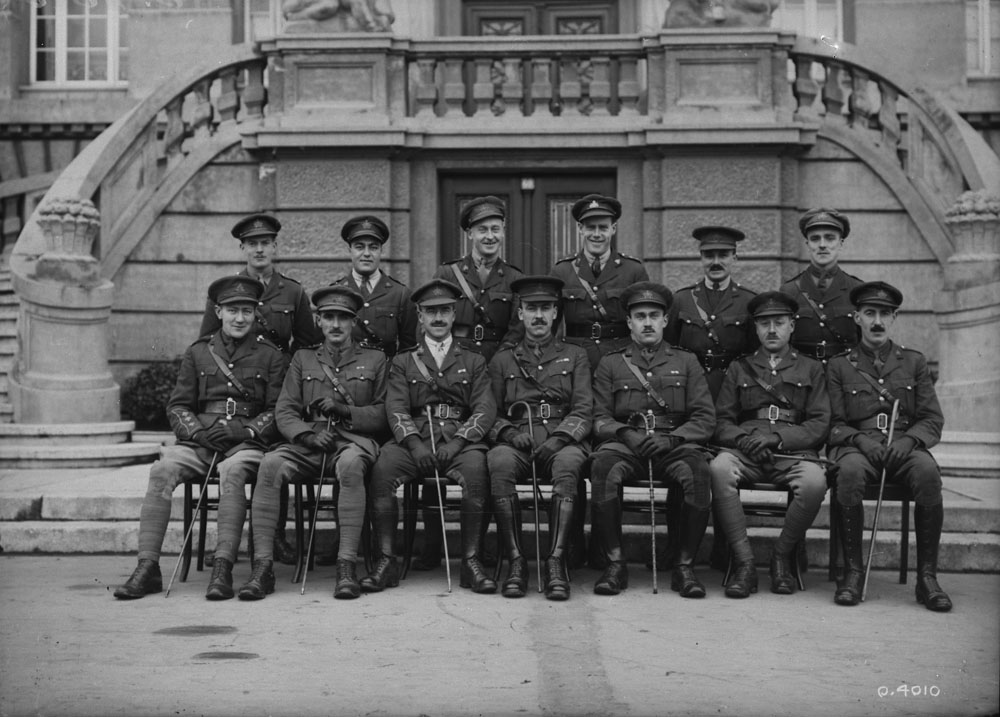
Origins and Formation
At the outbreak of the First World War in 1914, the Canadian army did not include cyclists. The British army, however, had been using bicycles since the 1880s; in 1908, British army reforms included the establishment of 10 bicycle units for the Territorial Force (the volunteer home defence army). Such was not the case in Canada, likely due to the lack of good road infrastructure across the country.
During the First World War, a cyclist company was added to each division of the British Army. When the First Canadian Division was formed at Valcartier, it followed the British template. Thus, the first company of Canadian cyclists was formed, with many members coming from the Canadian Corps of Guides (which did not proceed overseas as a formed unit). A company of 100 men sailed for England in October 1914, but did not receive any bicycles until they arrived in England. The first bicycles supplied were CCMs and Planets made in Canada, but were later traded for BSAs, the standard bicycle used by the British Army.
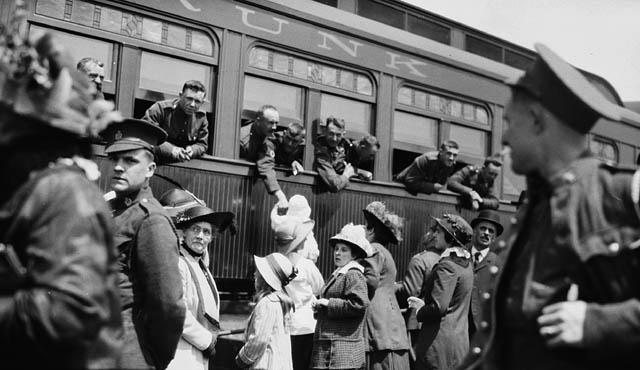
Role of the Cyclists
Cyclist units were meant to act as mobile forces that could protect the army’s flanks from surprise attack. Historically, this role would have been performed by horse-mounted soldiers. Bicycles, however, had several advantages over horses, millions of which were used for transport and supply during the First World War. (See Animals that Served in the First World War.) The modern battlefield was a dangerous and terrifying place for both man and beast. Horses were not only expensive to feed and maintain — many died of disease or from wounds inflicted by artillery, machine guns, tanks and gas. In contrast, bicycles were relatively cheap and were unaffected by the noise and stress of modern warfare. A bicycle-mounted soldier could travel quickly, without worries about feeding or protecting their steed. Bicycles were also quieter and less visible than horses, which was an advantage in intelligence work.
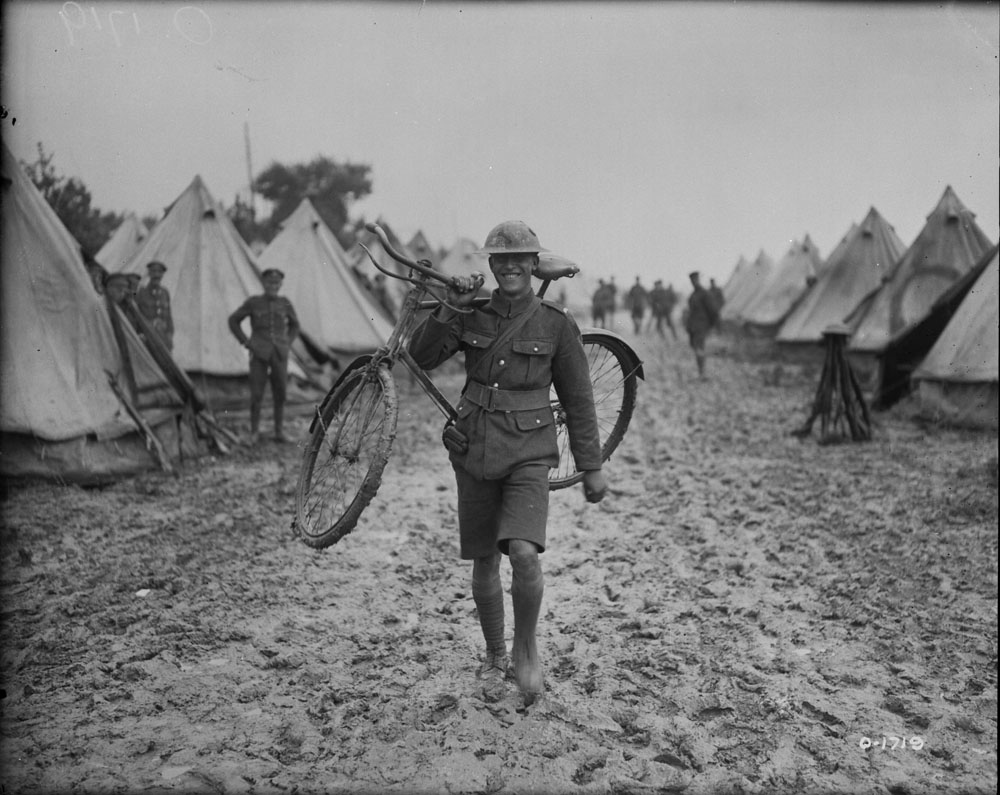
Creation and Consolidation of New Units
As the Canadian Expeditionary Force (CEF) grew, more cyclist companies were formed to support the new divisions. In the fall of 1914, the Second Division Cyclist Company was formed from units across Canada and was sent overseas in May 1915. Several more platoons were formed and sent to Europe in early 1916, eventually being consolidated into the Third Division Cyclist Company. Companies to support the Fourth and Fifth Divisions were briefly formed but were then broken up and distributed between the other cyclist units and non-related units. In May 1916, the three companies were combined into the Canadian Corps Cyclist Battalion and designated A, B, and C companies of the battalion.
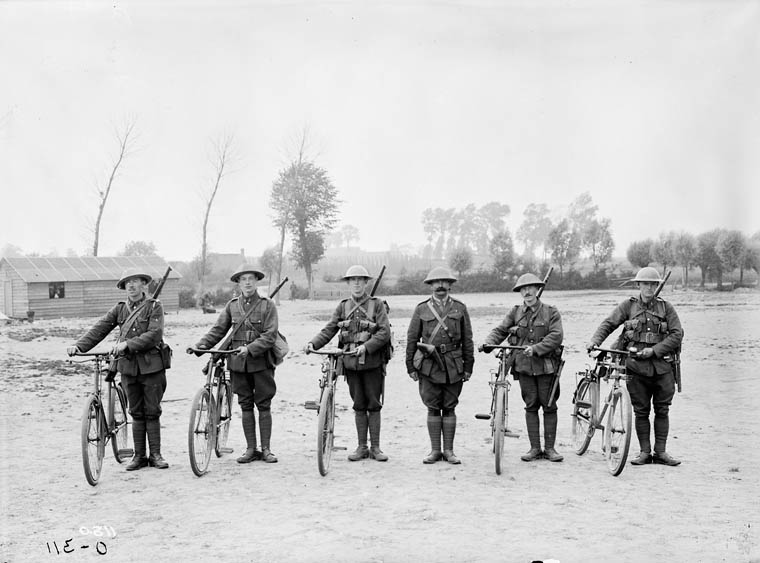
Operations
For much of the war, cyclist units were not employed in their intended role as a mobile force. On the Western Front, the belligerents soon reached a stalemate, settling down to a long period of relatively static warfare (see Trench Warfare). Cyclists therefore acted as runners, trench diggers, machine gunners, stretcher bearers and even prisoner of war escorts in France.
Cyclists first saw combat during the allied counterattack after the German gas attack at the Second Battle of Ypres in April 1915. The troops were pushed forward to hold a key position without gas masks or steel helmets to protect themselves. Their bikes were all but useless in this scenario. (See also Canada and Gas Warfare and Hypo Helmet.) The cyclists were next present at the Battle of the Somme, where they carried supplies and stretchers and buried the dead. They were also involved in the preparations for the Battle of Vimy Ridge but were mostly relegated to digging tunnels. Cyclists were involved in trench support during the campaigns at Hill 70 and Passchendaele as well; some also manned machine gun posts or were assigned to anti-aircraft duty.
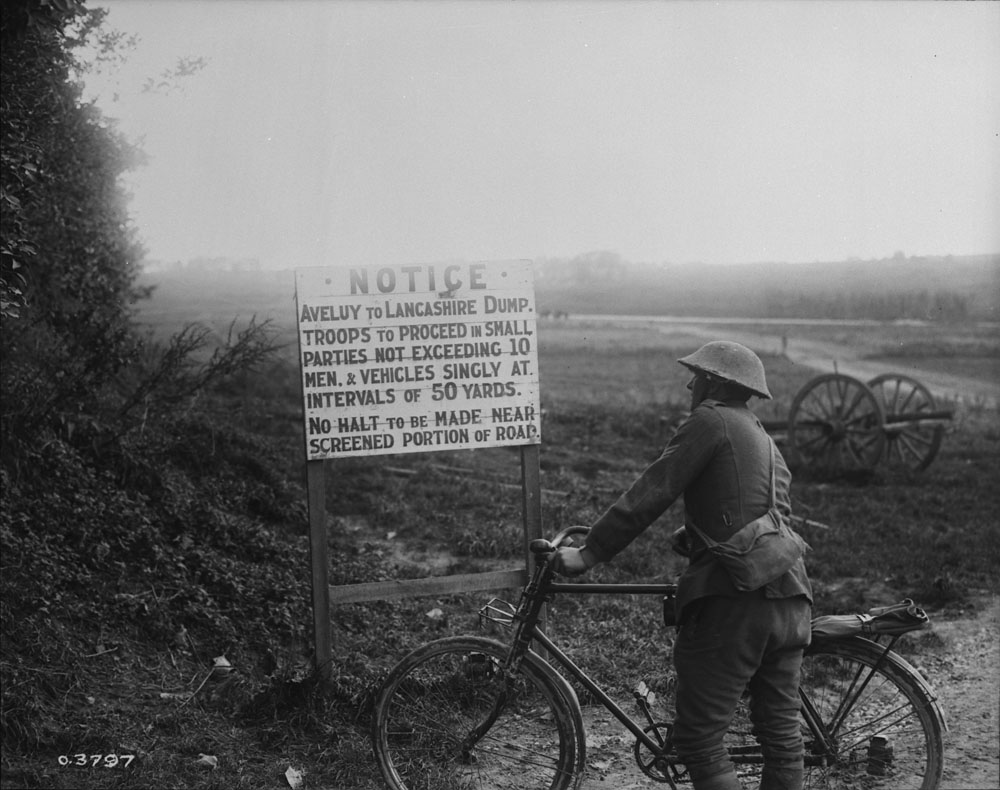
The cyclists came into their own late in the war as part of the Canadian Independent Force. Created by Lieutenant General Arthur Currie and Brigadier General Raymond Brutinel, this was a mobile force that could move independently of the main body. Here the cyclists got to exercise their strengths of mobility and speed — something that was not useful in trench warfare. The Independent Force included machine guns, mortars, armoured cars and cyclists, who carried machine guns and other equipment (more than 40 kg in total) on their bikes. This group became important as the conflict broke out of trenches and became a highly mobile operation later known as the Hundred Days Offensive, as well as Canada’s Hundred Days. This was the culmination of the CEF’s experience with combined arms and mobile warfare, in which cyclists played a key role.
Occupation Duty
After the armistice was signed, the First and Second Canadian Divisions were assigned occupation duties and were ordered on a 400 km march into Germany. A and B Companies of the Cyclist Battalion accompanied the divisions. During the march they conducted screening and piquet duties. Once in Germany, the cyclists returned to light duties such as manning check points on the main roads.
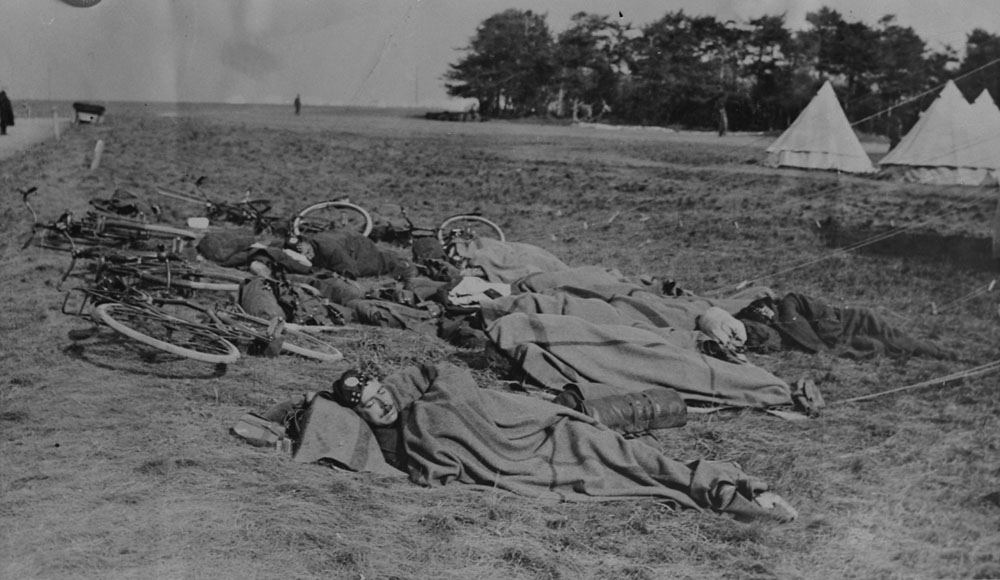
Post-War
By the end of the war, 1,138 men had served in the ranks of the cyclist units, with 261 killed or wounded — a casualty rate of 23 percent. When the war ended, the Cyclist Battalion and other associated units were disbanded as part of general demobilization. In 1934, the veterans of the cyclist units met in Toronto for a reunion and formed the Canadian Corps Cyclist Battalion Association. They held regular reunions until the last member died in 1996.


 Share on Facebook
Share on Facebook Share on X
Share on X Share by Email
Share by Email Share on Google Classroom
Share on Google Classroom







